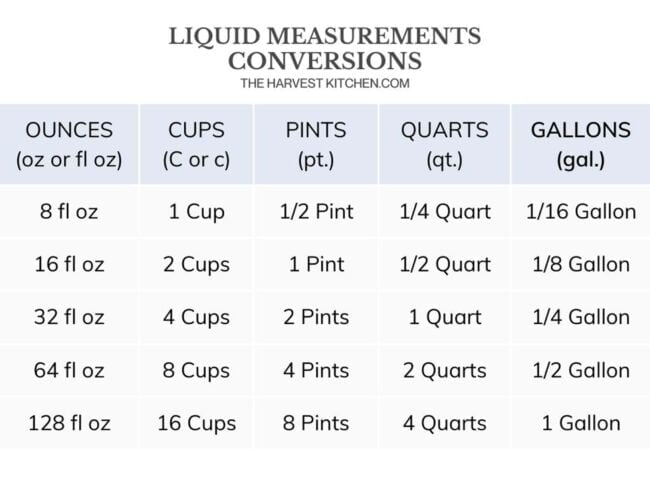How Many Pints in a Gallon
Need to know how many pints in a gallon? Here’s everything you need to know about how to convert pints to gallons or gallons to pints (gal to pt or pt to gal). I’ve also provided you with an easy conversion chart below to help you memorize these conversions.

Being successful in the kitchen requires the accurate measurement of ingredients. When following recipes to make a meal, you might be able to eyeball the amount of herbs and spices and other simple ingredients, but knowing how many pints in a gallon is a helpful liquid measurement conversion to have memorized for achieving success in the kitchen.
How Many Pints Are In A Gallon?
There are 8 pints in 1 gallon, 4 pints in 1/2 gallon and 2 pints in 1/4 gallon.
- 8 pints = 1 gallon
- 6 pints = 3/4 gallon
- 4 pints = 1/2 gallon
- 2 pints = 1/4 gallon
What is a Pint?
The U.S. Liquid Pint (abbreviated pt) is a measurement in the Imperial and United States customary measurement systems used to measure volume or how much liquid a container can hold. A pint is a unit of volume equal to 1/8 of a gallon, but the British imperial pint is about 20% larger than the U.S. pint because the two measuring systems are defined differently. Most other countries have standardized their measurements to the metric system. The word pint comes from the French word “pinte” and from the Latin word “pinca” which means painted for marks painted on the side of a container showing volume capacity.
What is a Gallon?
In the U.S. a Gallon (abbreviated “gal”) is a measurement in the Imperial and United States customary measurement systems used to measure volume or how much liquid a container can hold. A gallon is a unit of volume equal to 4 quarts, 8 pints, 16 cups and 128 fluid ounces, but the British imperial gallon is about 20% larger than the U.S. gallon because the two measuring systems are defined differently. Most other countries have standardized their measurements to the metric system.
Liquid Measurements Conversions
Imperial (US) System vs Metric Systems
Different countries use different volume and weight measurements. Some countries use the Imperial System while some use the Metric System.
The United States still uses the Imperial System for measurements (which was developed and used in the United Kingdom around 1826), where most countries like the United Kingdom, Australia, Canada have since adopted the metric system using measurements like grams, meters, liters, kilograms and kilometers. There aren’t significant differences in volume between the Imperial (US) and Metric measuring systems.
For the most part, the Metric System has replaced the imperial system in countries who once used it. The United States is one of the few countries in the world who has yet to switch to the Metric System of measurements. But if you’re in a pinch, if a recipe is written using the Metric system, you can easily use US teaspoons and tablespoons to convert to metric measurements.
The US Customary System
The United States Customary System (U.S. Customary System) is a system of weights and measures used in the United States and some other countries. This system includes units for measuring length (inches, feet, yards and miles), weight (ounce, pound, ton), and capacity (teaspoons, tablespoon, cups, pints, quarts, gallons).






